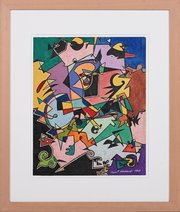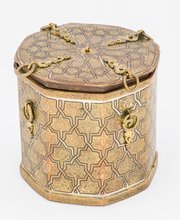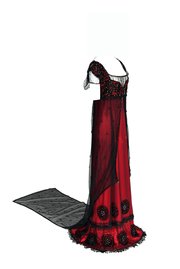
Vase (so-called 'Cavour Vase')
Museum of Islamic Art
- Title:
- Vase (so-called 'Cavour Vase')
- Production place:
- Syria
- Date:
- 1340 - 1360
- Period:
- Mamluk
- Title:
- Vase (so-called 'Cavour Vase')
- Production place:
- Syria
- Date:
- 1340 - 1360
- Period:
- Mamluk
- Material:
- Glass, Enamel, Gold
- Technique:
- Glassblowing, Enamelling, Gilding
- Dimensions:
- 29
- Diameter:
- 19.1
This vase is one of the most impressive examples of Mamluk glass in known existence. Made of blown cobalt blue glass, this pear-shaped vase - with a cylindrical neck flaring to a rounded thickened rim and resting on a low splayed foot - is entirely painted with polychrome enamel and gilt decoration consisting of horizontal registers of vegetal motifs, calligraphy, and birds. The elegant naskhi script encircling the neck translates as, “Glory to our Lord the King, the holy solider, the defender, sultan of Islam and the Muslims, tamer of unbelievers, possessor of justice in the world”; with the verse around the middle of the body reading, “Glory to our lord the sultan, the king, the learned, the doer, the holy soldier, the defender, the king, the learned, the just, the holy soldier, the defender, the pious, the victorious, trusting in God, the triumphant, sultan of Islam, the doer, the just, the holy soldier, the defender, the pious, trusting in God, the triumphant, sultan of Islam and the Muslims, tamer of unbelievers and polytheists, possessor of justice in the world.” These inscriptions carry the heroic and pious attributes of an unnamed sultan, a form of eulogic titling commonly found on objects from early 7th century AH/13th century CE Ayyubid Syria, and later continuing into the Mamluk period. Three exotic birds also decorate the vase, which reflect the influence of luxury central Asian textiles (Mongol in particular) arriving into Egypt in the mid-8th century AH/mid-14th century CE. The birds might also relate to the famous phoenix from the 572-573 AH/1177 CE Persian literary work Conference of the Birds, and represent symbols of immortality and hope. The precision and detail of the vase’s decoration suggest that it was made in an accomplished workshop in either Egypt or Syria, both established centres of enamelled glass making during the Mamluk period.



